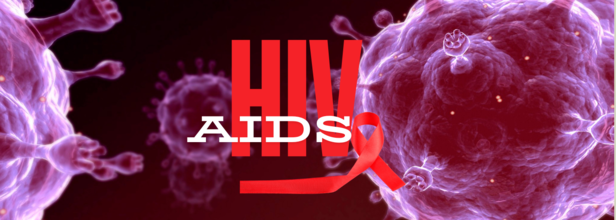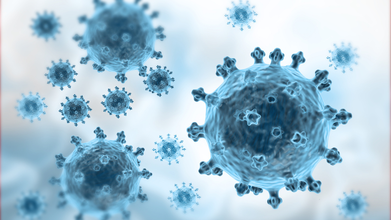- Health Conditions A-Z
- Health & Wellness
- Nutrition
- Fitness
- Health News
- Ayurveda
- Videos
- Medicine A-Z
- Parenting
HIV vs. AIDS: What You Should Know About These Commonly Confused Terms

World Aids Day
The global challenge of HIV/AIDS remains one of the most pressing public health issues today. According to the latest data from UNAIDS, around 38.4 million people worldwide are living with HIV/AIDS, underlining the need for not only medical intervention but also comprehensive awareness, education, and social change. Despite the significant strides made in treatment and prevention, the confusion surrounding the relationship between HIV and AIDS still persists.
Young people have become influential advocates in the fight against HIV/AIDS. Research from UNICEF shows that youth-led initiatives can lower HIV transmission rates by as much as 45% in targeted communities. These young activists utilize digital platforms and peer-to-peer education to dispel myths, promote safe practices, and foster supportive environments for those affected by HIV/AIDS.
Dr Gowri Kulkarni, an expert in Internal Medicine, explains that while the terms HIV and AIDS are often used interchangeably, they are distinctly different. "HIV (Human Immunodeficiency Virus) is a virus that attacks the immune system, whereas AIDS (Acquired Immunodeficiency Syndrome) is a condition that occurs when HIV severely damages the immune system," she clarifies. To understand the implications of these differences, it's important to explore the fundamental distinctions between the two.
1. HIV is a Virus; AIDS is a Syndrome
HIV is the virus responsible for attacking the body’s immune system, specifically targeting CD4 cells, which are crucial for the body’s defense against infections. As HIV progresses, it destroys these cells, weakening the immune system over time. If left untreated, this continuous damage can lead to AIDS.
AIDS, on the other hand, is a syndrome, not a virus. Dr Kulkarni further elaborates that AIDS is a collection of symptoms and illnesses that emerge when the immune system is severely compromised due to prolonged HIV infection. It represents the most advanced stage of HIV, and is characterized by very low CD4 counts or the onset of opportunistic infections like tuberculosis, pneumonia, or certain cancers.
2. Not Everyone with HIV Develops AIDS
A key distinction to remember is that not everyone with HIV will progress to AIDS. Thanks to advancements in medicine, particularly antiretroviral therapy (ART), individuals living with HIV can manage the virus and maintain a healthy immune system for many years, or even decades, without ever developing AIDS. ART works by suppressing the virus to undetectable levels, effectively preventing the damage HIV would otherwise cause to the immune system.
Without treatment, however, HIV progresses through three stages:
- Acute HIV Infection: This stage occurs shortly after transmission and may include symptoms like fever, fatigue, and swollen lymph nodes.
- Chronic HIV Infection: Often asymptomatic or mildly symptomatic, the virus continues to damage the immune system but at a slower rate.
- AIDS: This is the final stage, marked by severe immune damage and the presence of infections that take advantage of the compromised immune defenses.
3. HIV is Transmissible; AIDS is Not
Another key distinction between HIV and AIDS is the way in which they are transmitted. HIV is highly contagious and can be transmitted through the exchange of bodily fluids such as blood, semen, vaginal fluids, and breast milk. It is primarily spread through unprotected sexual contact, sharing needles, or from mother to child during childbirth or breastfeeding.
AIDS, however, is not transmissible. It is not a disease that can be passed from one person to another. Rather, AIDS is the result of untreated, advanced HIV infection and is a direct consequence of the virus’s damage to the immune system.
4. Diagnosis Methods Differ
HIV and AIDS are diagnosed through different methods. HIV is diagnosed through blood tests or oral swabs that detect the presence of the virus or antibodies produced by the immune system in response to the virus. Early detection of HIV is crucial, as it allows for timely intervention and treatment, which can prevent the virus from progressing to AIDS.
AIDS, on the other hand, is diagnosed using more specific criteria. Dr Kulkarni notes that the diagnosis of AIDS is made when the individual’s CD4 cell count falls below 200 cells/mm³, or when opportunistic infections or certain cancers (such as Kaposi's sarcoma or lymphoma) are detected. Diagnosing AIDS involves a more thorough assessment of the individual’s immune function and overall health, as opposed to just the detection of HIV.
5. Treatment Goals Are Different
The treatment goals for HIV and AIDS differ significantly, although both involve antiretroviral therapy (ART). For HIV, the primary treatment goal is to suppress the virus to undetectable levels, thus maintaining a strong immune system and preventing further transmission of the virus. People living with HIV can often live long, healthy lives if they adhere to ART.
For individuals diagnosed with AIDS, the treatment plan becomes more complex. While ART remains an essential part of managing the virus, treatment for AIDS also focuses on addressing the opportunistic infections and secondary health complications associated with severe immune suppression. The goal of treatment for AIDS is not only to manage the HIV virus but also to improve the quality of life and extend survival by treating these secondary health issues.
Role of Community Engagement in Combatting HIV/AIDS
While the medical community has made great strides in managing HIV, the battle to curb its transmission is also a social and cultural issue. Dr Daman Ahuja, a public health expert, highlights that HIV/AIDS awareness and education are vital to reducing transmission rates and supporting those affected by the virus. "Young people, especially, have become key advocates in the fight against HIV/AIDS," says Dr Ahuja. "Research from UNICEF shows that youth-led initiatives can lower HIV transmission rates by as much as 45% in targeted communities."
Additionally, grassroots activism plays a significant role in raising awareness and addressing stigma. As the World Health Organization reports, community-based interventions have been proven to increase HIV testing rates and improve treatment adherence, which are crucial in the fight against the pandemic.
The ultimate goal of organizations like UNAIDS is to eliminate the HIV/AIDS pandemic by 2030. Achieving this requires global collaboration, from medical treatment advancements to public health strategies, education, and advocacy. Dr Kulkarni’s insight underscores the importance of early detection, treatment adherence, and community support in the fight against HIV/AIDS.
Dr Gowri Kulkarni is Head of Medical Operations at MediBuddy and Dr Daman Ahuja, a public health expert and has been associated with Red Ribbon Express Project of NACO between 2007-12.
Air Pollution Is The Single Largest Health Risk In Delhi, Finds Study

Air Pollution Is The Single Largest Health Risk In Delhi, Finds Study
Delhi's air pollution continues to remain in the 'severe' category, and an analysis of Global Burden of Disease (GBD) 2023 found that in Delhi, 15% of all deaths are due to the air pollution. The study suggests that air pollution is city's single largest health risk. The deaths rose from 15,786 in 2018 to 17,188 in 2023.
Are Men Breathing In More Pollution?
Another study published in Scientific Reports, a five-year study titled Respiratory Deposition of Particulate Matter in Delhi: A Five-Year Assessment of Exposure Patterns and Health Risks tracked how particulate matter settles inside the respiratory system and found that men's exposure can be up to 1.4 times higher, especially while walking or commuting. The study noted that men on average spend more time outdoors while working, commuting, or walking in traffic-heavy areas. This leads to an increase in exposure.
Another reason is physiological, men have larger lung volumes, which means they inhale a greater volume of air with every breath. While women breathe slightly faster, the overall dose of pollution that settles in lungs tends to be higher in men because of how much air they inhale at once, and how long they stay outdoors.
While sitting, men inhale 1.5 times higher than women when it comes to PM2.5, and while walking, they absorb 1.2 times more than women. The same pattern is seen in PM10, while sitting, men record 1.34 times higher, and while walking, they inhale 1.15 times higher.
Delhi's AQI Today: On Tuesday, December 23, Delhi's AQI stood at 408 which is under the 'severe' category, around 5.30 am.
Read: British Man Compares Breathing In Delhi To Smoking 18 Cigarettes
Clean Air Is A Basic Right, Not A Luxury

This is happening in Delhi as we come closer to the festive time of Christmas. To draw attention to the continuously worsening AQI, National Students' Union of India (NSUI) representatives dressed as Santa Clause with gas masks. The NSUI volunteers walked in Santa Claus costumes, wearing gas masks to convey the message about Delhi's deteriorating air quality and growing public health emergency, and distributed face masks, candies, as well as handwritten notes that explained what exposure to polluted air can do to one's health. The NSUI representative also led an awareness walk and one of the office bearers said, "Santa represents joy, gifts and care for children. When even Santa needs a gas mask to survive in Delhi, it forces people to think about what kind of air our children are breathing."
“People already know the air is bad, but they have started accepting it as normal. Our effort is to remind everyone that this should not be normal," said another volunteer.
How To Read AQI?
As per the Central Pollution Control Board (CPCB), here is how you can know what your AQI stands for
- 0 to 50: Good
- 51 to 100: Satisfactory
- 101 to 200: Moderate
- 201 to 300: Poor
- 301 to 400: Very Poor
- 401 to 500: Severe
Air quality is made of dust and small particles like PM2.5 and PM10, along with gases like nitrogen dioxide from car exhaust, sulphur dioxide from factories, and carbon monoxide from vehicles. The levels are measured through specialized machines. In India, the standard of the machines are carried out by the CPCB.
This Mysterious New Virus Could Spread Faster Than Covid-19 And Flu

Credits: iStock
A new virus is going around the world, and experts say that it is stronger than COVID and flu. This has been termed as the new 'untreatable' mystery virus, and some even have warned that disinfectant cannot get rid of it.
This is the adenovirus, which exhibits same symptoms as a serious flu, including shortness of breath, a runny nose, and a sore throat. However, one difference is that this virus has lack of treatments. So for anyone who may have caught it, will have no other option but to "tough it out". However, the silver lining here is that in most cases, adenovirus is fairly mild, but if you are immunocompromised, then the symptoms could become more serious, reports the Mirror.
Eric Sachinwalla, Jefferson Health's medical director said that this virus is still unfamiliar and thus not much can actually be done to treat adenovirus. Speaking to PhillyMad, he said, "It is pretty contagious because it is heartier than other viruses - soap and water, or everyday disinfectant, won't kill it, so it tends to live in the environment longer."
Common Symptoms Of Adenovirus
- Shortness of breath
- Runny nose
- Sore Throat
- Diarrhea
- Pink eye
The good news is that for most part, these symptoms are manageable with rest. However, people who are more vulnerable, like the elderly, pregnant, or immunocompromised, may have to be more careful and keep a closer eye on their symptoms.
If the fever takes the body temperature to 40 Celsius, then it could be a serious situation, and you must consult your GP.
Read: Mystery Disease Adenovirus: New Virus Said To Be Stronger Than Covid And Flu — All You Need To Know
How Long Do The Symptoms Of This Mysterious Disease Last?
The symptoms usually start to subside within two days, however, if the symptoms stay even after three days without any relief, it might be a red flag. The best thing to do during such a situation is to go consult your GP.
What Is Adenovirus?
Adenovirus is a virus that has more than 60 different strains, which is why it is able to cause a variety of symptoms. Adenovirus refers to a group of common viruses that usually trigger cold- or flu-like illness. It spreads easily because it is far more resilient than many other viruses. Ordinary soap, water, and standard disinfectants do not reliably destroy it, allowing it to persist in the environment. As a result, infections often cluster in places where people spend time close together, such as daycares and military barracks. The virus spreads through the respiratory tract, can be shed in stool, and can survive for some time on contaminated surfaces, according to the CDC.
The reason for its spread right now is due to the surge of flu cases in the southern hemisphere which has influenced the outbreaks in the northern hemisphere. Another reason is the lower flu vaccinate rates, which has now made a large number of population more vulnerable to infections, overall, including adenovirus.
How Can You Stay Safe?
Since adenovirus spreads through close contact and is resistant to many everyday disinfectants, hygiene remains the key. The best way to stay safe is by avoiding close contact, especially with those who are unwell. You may also keep an eye on your symptoms, including your body temperature and take steps to prevent the virus from spreading by taking precautions, as well as getting the flu jab.
These 5 Trends Could Shape Healthcare In 2026

Credits: iStock
As we step closer to 2026, let us look at what healthcare trends could shape the upcoming year. The 2026 healthcare trend will follow or shape on challenges that 2025 threw on us, these included a surge in lifestyle diseases, continuous cases of non communicable diseases, which are preventable, and a rise in infectious diseases. Based on them, the predictions of 2026 healthcare trends can be made.
Preventive Care Will Matter The Most
In 2026, healthcare will look most at prevention. As a significant portion of diseases, like the NCDs or the non communicable diseases, which also include half of all the cancers are preventable. This includes changes in lifestyle habits, including food habits, dietary fiber intake, exercise, and maintaining a regular sleep cycle.
Careful Use Of GLP-1 Medication
2025 saw a surge in the use of GLP-1 medication, however, this year also saw many reported unusual side effects of the medication. The year 2026 will emphasize more on the correct use of the medication, as well as, what areas must one pay heed to, especially after the medications have been stopped.
Also Read: These Are The 7 Common Mistakes People Make After Stopping Their Weight Loss Jabs
Shift In Patient Coverage
In the US, new changes have been done in Medicaid and its eligibility, which might change the rules on potential expiration of advanced premium tax credits. This may mean that many patients could become uninsured, or underinsured. Moreover, other changes in the coverage may include GLP-1 medication, as on November 6 of 2025, President Trump announced deals with Eli Lilly and Novo Nordisk slashed prices and brought coverage to eligible beneficiaries for just a $50 copay, down from $1,000 per month, out of the pocket.
DIY Skincare
Experts, like board-certified plastic surgeon John Diaz, MD, tells Cosmopolitan that 2026 will see a rise in DIY skincare trends. This would be making skincare products yourself, which could include yogurt face masks, to kitchen-sink sunscreen. However experts have pointed out that products which are not backed by science or have used ingredients without a correct measure could do more harm than good to the skin. “Many people who tried DIY skincare found these treatments to be inconsistent or ineffective. At the end of the day, consumers want efficacy, which drives them towards products formulated with scientifically proven ingredients," says the doctor.
Annual Testing To Become A Norm
In 2025, there were many cases of young people experiencing strokes and hear attacks. This has shifted the conversation on annual testing, regular screenings, and blood works for people who may fit the traditional definition of "healthy". Many people under the age of 40 have also reported cancer, which is what makes early screenings, annual testing, and blood work more important to ensure that everything in the body is working smoothly.
While getting checked once a year is not a new concept, however, it was mostly common in older adults, but now more young adults are also now considering getting annual tests done, as they are easily available and can help detect severe illness early.
You May Like To Read: Did Scientists Just Come Up With A New Blood Test That Detects And Monitors Lung Cancers In Real Time?
© 2024 Bennett, Coleman & Company Limited

